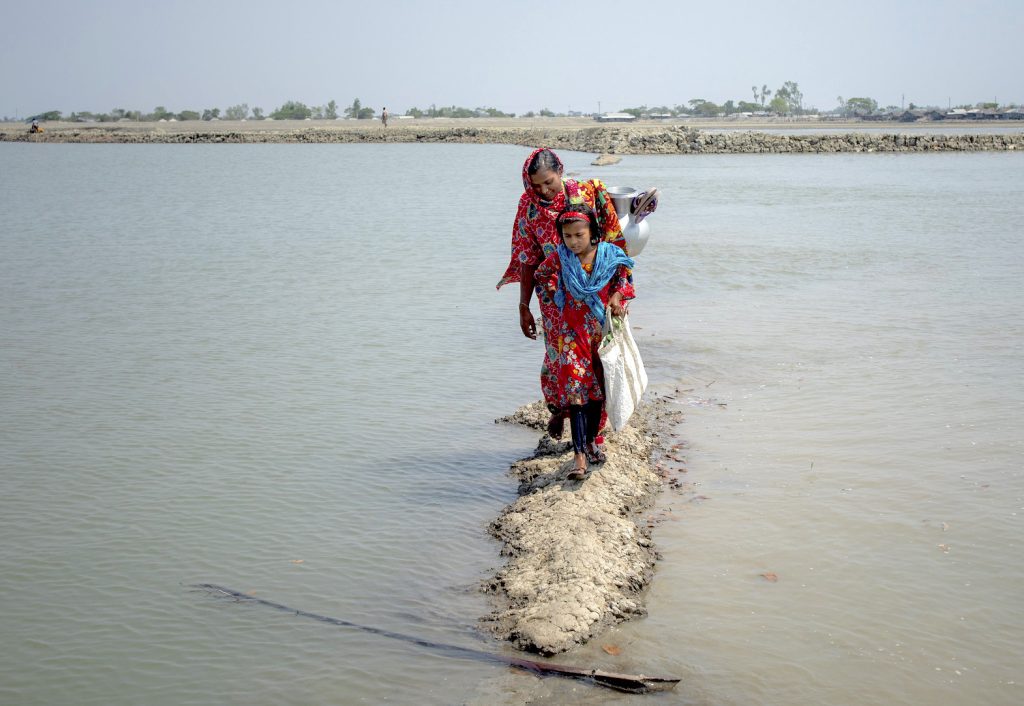Threats Bangladesh faces from rising sea level
Date: August 15,2023
GCI Blog Post: Sea level rise is a significant global issue that poses a major threat to low-lying countries like Bangladesh. With over 160 million people and a large percentage of the country’s landmass located in coastal areas, Bangladesh is particularly vulnerable to the adverse effects of sea-level rise. In this article, I will discuss the potential problems that Bangladesh may face due to sea-level rise.
Sea-level rise is primarily caused by the melting of ice sheets and glaciers, which, in turn, is a result of global warming. As the planet continues to warm up, the ocean’s temperature increases, causing it to expand, leading to higher sea levels. Scientists predict that the global sea level could rise by up to one meter by the end of the century, which would have catastrophic consequences for Bangladesh.
The first and most obvious problem that Bangladesh will face due to sea-level rise is the loss of land. The country is already grappling with the issue of land scarcity, and as sea levels rise, large parts of the country’s coastal regions could become uninhabitable. Bangladesh’s coastal areas are home to millions of people, and they are an integral part of the country’s economy and culture. However, due to its geographical location, Bangladesh is particularly vulnerable to the impacts of sea-level rise, which poses a significant threat to the country’s coastal regions. The country’s coastal regions are low-lying and densely populated, making them particularly vulnerable to flooding and storm surges.
In recent years, the frequency and intensity of cyclones and floods have increased, causing significant damage to infrastructure, crops, and livelihoods. The damage caused by these extreme weather events is only set to worsen as sea levels continue to rise. According to a recent report by the World Bank, Bangladesh is one of the country’s most at risk of being affected by sea-level rise. The report predicts that sea levels could rise by up to 1.5 meters by the end of the century, which could displace up to 18 million people in Bangladesh by 2050. This figure represents almost 10% of the country’s population and makes Bangladesh one of the worst-affected countries in the world.
The second major problem that Bangladesh will face due to sea-level rise is flooding. The country is already prone to flooding due to its location at the confluence of three major rivers, and as sea levels rise, the situation is only going to worsen. The country’s coastal regions are at risk of being submerged, resulting in frequent and severe flooding, which could have devastating effects on agriculture, infrastructure, and people’s livelihoods.
 However, with sea levels rising, the freshwater sources in the coastal regions are at risk of being contaminated with saltwater. The intrusion of saltwater into freshwater sources is primarily caused by the movement of groundwater towards the coast in response to sea-level rise. As sea levels rise, the pressure of saltwater on the aquifers increases, forcing the freshwater to retreat further inland.
However, with sea levels rising, the freshwater sources in the coastal regions are at risk of being contaminated with saltwater. The intrusion of saltwater into freshwater sources is primarily caused by the movement of groundwater towards the coast in response to sea-level rise. As sea levels rise, the pressure of saltwater on the aquifers increases, forcing the freshwater to retreat further inland.This leads to a reduction in the availability of freshwater, making it increasingly difficult for farmers to irrigate their crops and for households to access clean drinking water. The contamination of freshwater sources with saltwater has several adverse effects. Firstly, it reduces the quality of the water, making it unsuitable for drinking and irrigation purposes. The high salt content in the water can lead to health problems, including hypertension and kidney damage, and can also damage crops, reducing agricultural yields. Secondly, the intrusion of saltwater into freshwater sources can cause soil salinization, which occurs when the salt in the water accumulates in the soil over time.
This reduces the fertility of the soil and makes it unsuitable for growing crops, which can have severe economic implications for farmers in the coastal regions. The contamination of freshwater sources with saltwater can exacerbate the already precarious situation of water scarcity in Bangladesh. With the majority of the population relying on groundwater sources, the reduction in the availability of freshwater due to saltwater intrusion can lead to conflicts over water resources and further exacerbate the already existing water crisis.
Lastly, sea-level rise could also have severe economic consequences for Bangladesh. The country’s economy is heavily reliant on agriculture and fishing, which are both at risk due to the adverse effects of sea-level rise. The loss of land, freshwater sources, and fishing grounds could lead to a decline in agricultural and fishing output, which would have a ripple effect on the entire economy.
Sea-level rise is a significant threat to Bangladesh, which is already grappling with a host of economic, social, and environmental challenges. While the country has taken several measures to adapt to the impacts of sea-level rise, including the construction of coastal embankments and the promotion of climate-resilient agriculture, a more comprehensive and coordinated effort is needed to mitigate the worst effects of this looming crisis. Urgent action is required to reduce greenhouse gas emissions and limit global warming to prevent the worst-case scenario from becoming a reality.



